How much will any baby chameleon look like its parents? It's a tough question to answer, and it depends on lots of genetic factors. But it's a question that many new chameleon keepers (particularly when considering a panther or veiled for the first time) ask themselves when they order a baby sired (fathered) by one male or another.
On one hand, the chameleon breeders' method of advertising offspring from a specific male or another is a little deceptive. It seems to imply that the baby you choose will look like its father, which may or may not be the case at all. But on the other, it's the only way to give buyers a look into the potential behind these little brown or green babies for sale.
If you're anything like I am, when you see a male panther you love, for example, you would do anything to buy a carbon copy of that male. I've certainly paid more money and waited a long time to try to do just that before, with mixed results. In one instance, I wanted a solid red and blue Ambilobe panther just like Fierce (pictured below, first photo) and waited a good year before I was able to purchase a son that had the same potential. However, I also tried to purchase a blue and red Nosy Be from a different breeder and got a son that was the total opposite.
So how likely is it that you'll get a baby male that will look just like his father? Depending on what type of chameleon you're getting, I think it's fairly unlikely. If you're purchasing a panther locale that naturally has a lot of variation, like Ambilobe, I think it's very unlikely to get one specific look to manifest in every offspring every time. If there is wild caught blood recently in the family line, I also think that adds a high probability of "wild card" genes popping up. Additionally, remember that the offspring have 50% of their mother's genetics as well, so her half of the bloodline will make a big impact on what the offspring look like.
If you truly want to improve your chances of buying a panther or veiled chameleon with a specific look:
- Ask to see as many males on both sides of the bloodline as possible: Most breeders will be happy to show you the father, the grandfathers on both sides, and great-grandfathers if available.
- Related to point one, see if the breeder is breeding for a specific look: Are all the males yellow-bodied blue-bar Ambilobes? Is that the look the breeder is trying to attain or are they breeding all sorts of different varieties of Ambilobes together?
- Talk to the breeder and request an animal with a specific look: Most breeders will be happy to accomodate you if they can. Typically they will keep an eye out in their stock for an animal that shows the potential you are looking for and will let you know.
- Be willing to wait longer and pay a little more: It's harder to see what a baby panther or veiled will grow up to be when they are small and tan; be willing to pay a little more for a hold-back (a chameleon that was held back a little longer in case it was breeding-stock-worthy) that may be showing more obvious color and pattern.
- Consider buying an adult instead: There's nothing more certain than buying an adult chameleon that already has his full color and pattern potential. This is the only way to certify 100% that you're getting the exact chameleon you want. People re-home adult chameleons all the time, so keep an eye out in classified ads online.
With a little patience, perhaps a little more money, and some luck you can certainly get the chameleon you want if you're willing to look for it. I will be following these same steps later this coming year as I look for my next panther chameleon! So wish me luck, and good luck to you as well!
 |
| Another example - Sire Iceman, from The Chameleon Company (a pure Nosy Faly), and the son from him I had, Daedalus. Daedalus was a Faly and Ambanja mix, an accident that happened when the mother turned out to not be a Nosy Faly as well. See what a difference the mother's genetic contribution makes. |
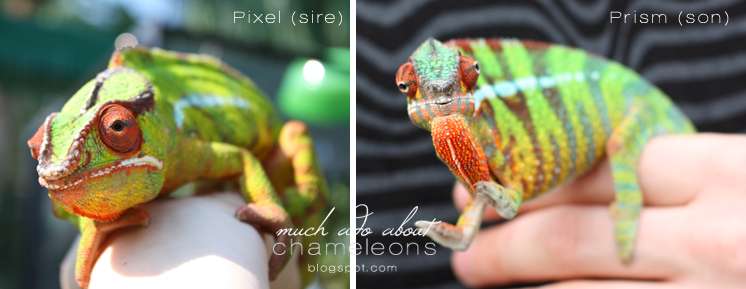 |
| Two chameleons, both owned by Dr. O's Tie-Dyed Chameleons, with the sire, Pixel on the left and one of his hold-back sons, Prism, on the right. They both look very similar, but most of Prism's siblings were much more blue and green. They do not share his bright reds and yellows (yet, anyway!) |
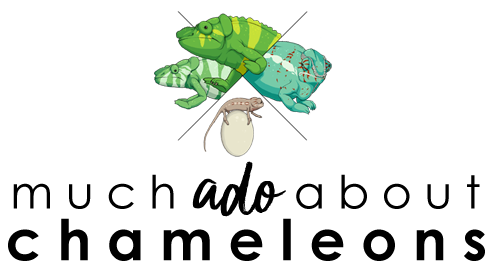

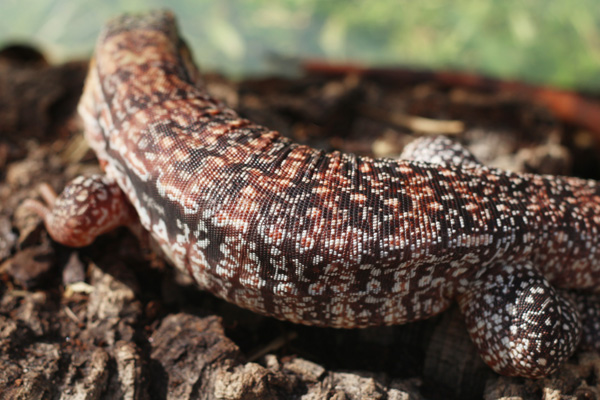
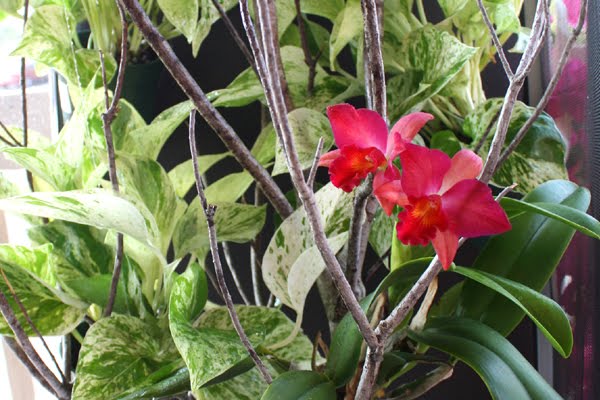

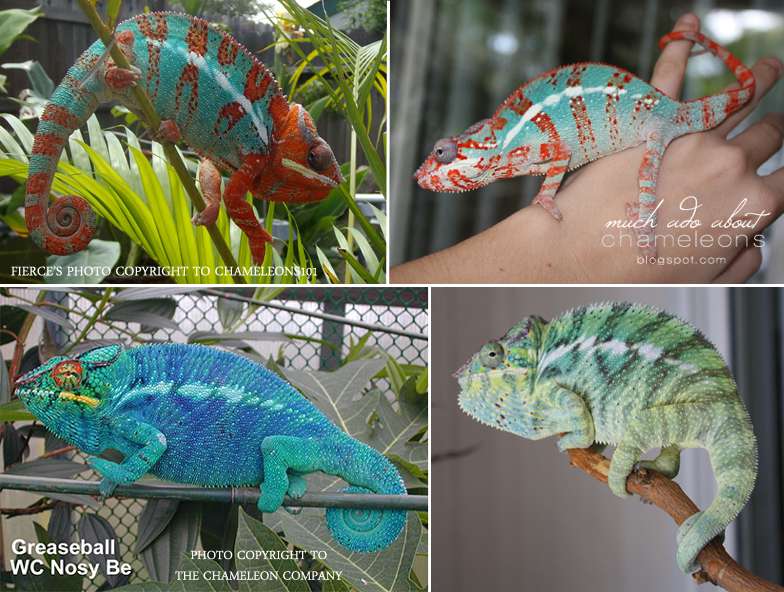







Thanks for another useful post. Never knew about this. I like the idea of buying an adult. In Asia, the price is of an adult panther cham is so much more expensive than the baby. It can cost 3 times as much.
ReplyDeleteThank you! It's the same here as well, adults are much more expensive. But it's because you KNOW what you're getting exactly, you don't take the gamble of waiting for a little brown baby to mature and hope it turns out how you want him to.
DeleteThank you!
ReplyDelete